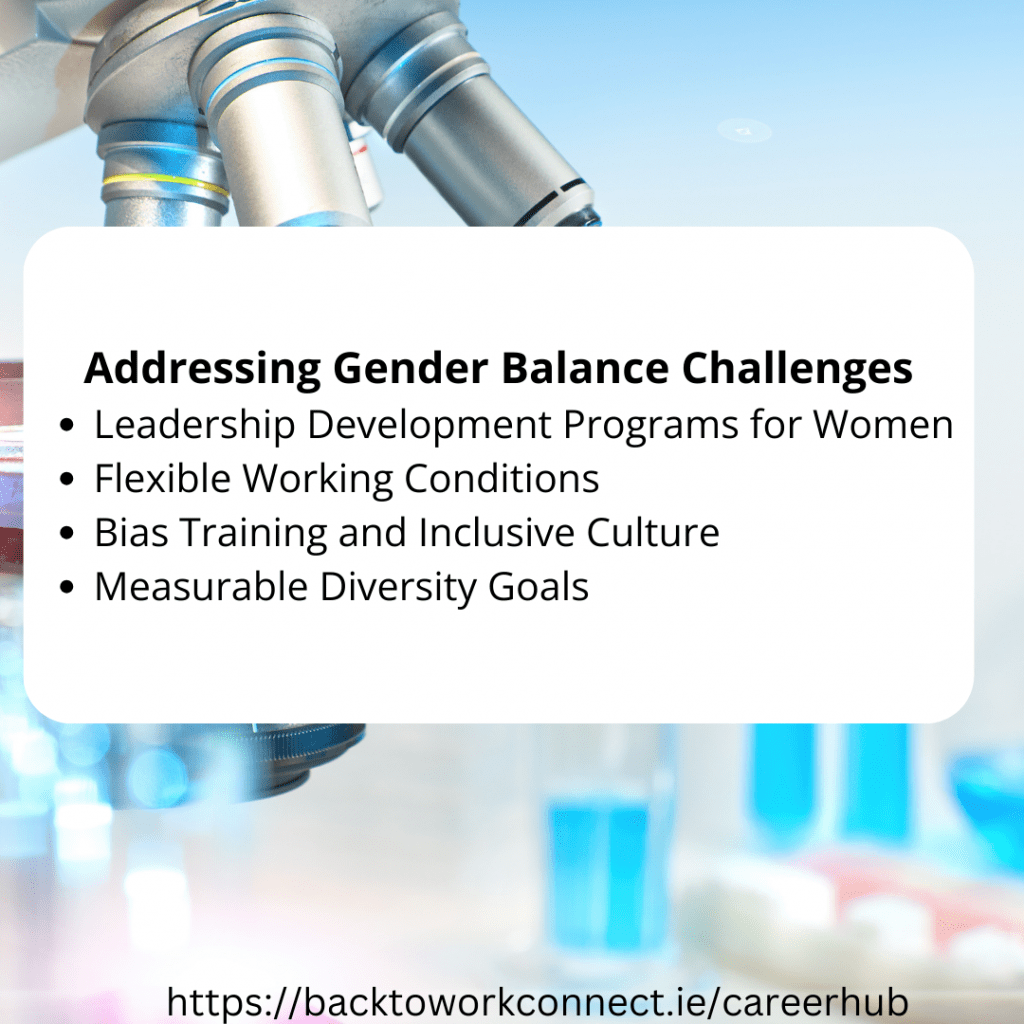The pharmaceutical industry, like many other sectors, faces significant challenges when it comes to achieving gender balance. While progress has been made in recent years, particularly in areas like research and entry-level positions, there are still numerous barriers to achieving gender equality, especially in leadership roles and decision-making positions.
Here are the key challenges the pharma industry faces with gender balance:
Underrepresentation in Leadership Roles
Gender Imbalance in Senior Roles: Despite the fact that women represent a large portion of the workforce in the pharmaceutical industry (often over 50% at entry levels), they are underrepresented in senior leadership roles such as C-suite positions (e.g., CEO, CFO) and board positions. According to various reports, women typically make up a much smaller percentage (often under 30%) of executives in pharma companies.
Promotion Barriers: The “glass ceiling” effect still exists, where women find it more difficult to advance to higher levels of management. Studies show that unconscious bias, stereotypes about women’s leadership abilities, and networking challenges can all contribute to fewer women being promoted to senior positions.

Lack of Female Representation in Scientific Roles
Gender Gap in Research Leadership: While many women pursue careers in science and research, there is a notable gap when it comes to leadership in research and development (R&D), clinical trials, and scientific innovation. Fewer women lead research teams or hold senior scientific roles in pharma companies, even though women make up a substantial part of the scientific workforce.
Bias in Research Funding and Opportunities: Women researchers may face challenges in obtaining funding, gaining recognition for their work, and accessing leadership positions within R&D departments. This affects their ability to influence decision-making and innovation pipelines in the industry.
Pay Disparity
Gender Pay Gap: Like in many industries, there is a persistent gender pay gap in the pharmaceutical sector, with women often earning less than their male counterparts, especially at senior levels. This pay gap can discourage women from pursuing or staying in leadership roles.
Bonuses and Compensation Packages: Studies show that women in pharma often receive smaller bonuses and less favorable compensation packages compared to their male colleagues, further exacerbating inequality.
Lack of Work-Life Balance and Support Systems
Long Hours and Travel Requirements: The demands of senior roles in pharma often involve long hours, frequent travel, and the need for constant availability, which can disproportionately affect women, especially those with caregiving responsibilities. The industry has been slow to adapt to more flexible working arrangements, despite the broader move toward remote work post-pandemic.
Limited Support for Parental Leave and Childcare: In some pharma companies, policies supporting parental leave, childcare, and family-friendly working hours are insufficient, making it harder for women (especially working mothers) to balance their career aspirations with family responsibilities. Women often face career interruptions due to motherhood, which affects their progression.
Unconscious Bias and Stereotypes
Perception of Leadership: There is still a strong cultural stereotype that associates leadership with traditionally “masculine” traits such as assertiveness, decisiveness, and risk-taking. Women may be unfairly perceived as less effective leaders, despite demonstrating strong performance and leadership skills. This bias can affect hiring, promotions, and leadership opportunities.
Mentorship and Sponsorship: Women in pharma often have less access to influential mentors or sponsors who can advocate for their advancement. Without mentorship or sponsorship, it becomes more difficult to navigate corporate politics and secure career opportunities that lead to leadership positions.
Gender Bias in Clinical Trials
Gender Representation in Research Subjects: Although this issue is related to gender equity in broader healthcare outcomes, it is significant in the context of pharma. Historically, clinical trials have often underrepresented women, leading to gaps in knowledge about how drugs and treatments affect different genders. Women are less likely to be included in early-stage drug trials, which limits the understanding of sex differences in treatment outcomes and side effects.
Lack of Focus on Women-Specific Health Issues: Pharma companies may prioritise conditions that affect both genders or are male-centric in research, sometimes overlooking women-specific health issues like reproductive health, menopause, and autoimmune diseases, which tend to affect women more frequently.
Cultural Challenges and Global Disparities
Cultural Norms in Different Markets: The pharmaceutical industry operates globally, and gender balance issues vary by region. In certain regions, traditional gender roles and societal expectations may be more entrenched, making it even more difficult for women to achieve leadership roles or influence decision-making.
Diversity Within Gender Balance Efforts: Even within efforts to address gender balance, there may be a lack of focus on intersectionality—meaning that women of color, LGBTQ+ women, or those with disabilities may face even greater challenges in accessing opportunities in the industry.
Slow Progress Despite Initiatives
Insufficient Structural Change: While many pharmaceutical companies have launched diversity and inclusion (D&I) initiatives, the progress has been slower than expected in translating those initiatives into measurable, sustainable change at the senior leadership level. Companies may focus on diversity quotas without addressing deeper structural issues like organisational culture, unconscious bias, and promotion policies.
Retention Challenges: Retaining women in mid-career positions continues to be a challenge, especially as they begin to seek leadership roles. Without sufficient support, women may leave the industry or transition to roles with more work-life flexibility.
Addressing Gender Balance Challenges: What Can Be Done?
To overcome these challenges, the pharmaceutical industry needs to adopt more targeted and proactive strategies:
Leadership Development Programs for Women: Companies can create programs to specifically develop women leaders through training, mentorship, and sponsorship.
Flexible Working Conditions: Offering flexible work arrangements and better support for parental leave can encourage more women to remain in the workforce and aspire to leadership roles.
Diversity in Clinical Trials: Increasing the representation of women in clinical trials is important to ensure that drugs and therapies are effective and safe for both genders.
Bias Training and Inclusive Culture: Implementing company-wide unconscious bias training and fostering a more inclusive work environment can help shift cultural attitudes.
Measurable Diversity Goals: Setting clear, measurable goals for gender diversity at every level of the organisation, and holding leadership accountable for progress, is essential to driving long-term change.

Conclusion
The pharmaceutical industry has made strides toward gender balance, particularly in entry-level roles and scientific positions. However, challenges remain, especially in terms of advancing women to leadership roles, eliminating pay disparities, and addressing gender bias.
Addressing these issues will require structural changes, a focus on mentorship and sponsorship, and ongoing efforts to create inclusive and supportive work environments.
For more information and supports on creating a Returner Friendly recruitment process reach out to our team at info@backtoworkconnect.ie
Keep up to date with the latest Returner Friendly employers, upskilling & retraining opportunities by joining our platform HERE
Sign up to our newsletter & job alert today and never miss the ideal opportunity again ! Sign up HERE





